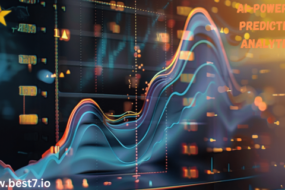
Hyperinflation remains one of the most devastating economic phenomena in the history of finance, with highly catastrophic effects on any nation and its citizens. This extreme form of inflation results in the erosion of the currency’s value and rapidly exacerbating prices.
Different case studies throughout the course of history have highlighted the high potential of this economic aspect and its challenging effects associated with specific policy outcomes. Thus, the paper discusses the causes and consequences of hyperinflation from various historical contexts, focusing on the Weimar Republic’s, Zimbabwe’s, and Venezuela’s case studies.
Historical Case Studies of Hyperinflation
The most commonly known form of hyperinflation remains Germany’s episode in the early 1920s that happened in the Weimar Republic following the outcomes of World War I. At that time, the German economy was on edge, and the government attempted to solve ongoing problems by printing massive amounts of money to pay war reparations and support its war debt sentence.
However, it resulted in devastating outcomes and a collapse of the German mark’s value, reaching the peak of 29,500% monthly inflation in October 1923. This hyperinflation shaped the adverse implications of the phenomenon, depriving the currency of value and results-oriented solutions among the population.
People could not afford to buy basic goods, and prices doubled every few days. In addition, the situation led to poor purchasing power by the middle class, increasing the level of poverty and social disorder. Therefore, as Zucchini and Ryan project, the modern computation indicated that lessons from this episode were available to be learned, and the projections for the absolute size of peak monthly inflation affected the assumptions related to monetary policymaking.
Zimbabwe’s Hyperinflation
Later on, a similar history of hyperinflation could be observed in Zimbabwe in the late 2000s. The incapacity of the government to promote the necessary land reforms impeded the development of agricultural production, while political instability and weak economic policies of the region deteriorated the situation. As a result, Zimbabwe became the precursor to the highest levels of inflation, reaching 89.7 sextillion percent in November 2008.
The Venezuelan Example
As a vivid example, I will use the situation in Venezuela and Zimbabwe. In the former, hyperinflation was able to ruin the local economy and lead to the death of many people. The main factors helping it are: “falling oil prices:
The country gets 95% of its export earnings from oil sales, and when oil prices crashed, its ability to earn dollars to import goods crashed too; government mismanagement: Venezuela had terrible economic policies; it held down the price of gasoline to unbelievably low levels and was aggressive in easing poverty through spending and privatization.”
The Central Bank of Venezuela had to print more money, which led to an inflation rate in the country. All in all, the hyperinflation rate is projected to have decreased in 2023, but it will still be very high.
Impact of Hyperinflation on Economic Stability
The hyperinflation had a far-reaching effect provided that the country’s economy was well-diversified and had no backup payment system or sufficient amounts of the US dollar. At the same time, in Zimbabwe, the hyperinflation served as “the last nail in the head for the local economy.”
The government wanted to introduce price controls, which led to an increase in the number of black market businesses. Therefore, in 2009, Zimbabwe stopped using its money and began obtaining dollars, such as the USA or South Africa one.
The main lesson is that any government should have a proper spending policy; otherwise, it will not be able to stabilize simply because people will start avoiding the local currency in attempts to save their money.
Impact on Consumer Behavior
Hyperinflation also destroyed consumer behavior as citizens were forced to spend their money before prices rose. This increased inflation aggravated an already weakened economy as it made it hard to stabilize.
International Sanctions
Owing to the deteriorating economic conditions, various political factors, including the imposition of sanctions by other countries, paralyzed recovery. These actions led to reduced access to hard currency and investment, which was essential in controlling the situation.
Social Unrest
By 2022, it was estimated that over 70% of the entire population would have been deep in poverty. However, it also led to mass street protests and high social unrest.
Lessons from the Case
The case of Venezuela is a lesson and a wake-up call that economic policies matter. However, it is crucial for a country’s economy to be diverse to cushion it in case of any shock. There is a need to do economic reforms to ensure that the future is ultimately bright for Venezuela, as it cannot withstand the pressure of another hyperinflation.
The Economic Effects of Hyperinflation
The effects of hyperinflation do not only impact the countries experiencing it but also create the urge for conscious policy on the part of other nations.
Currency Loses Value
In extreme cases of hyperinflation, money is discarded. People reject official currencies and opt for those of other countries.
Investment Challenges
Effects of hyperinflation discourage investment because companies cannot predict their costs in the future. There also exists a massive risk to any international companies who are interested in investing.
Poverty Increases
The state of hyperinflation reduces the general purchasing power of money, and people are not able to purchase food and other basics. It is estimated that in all the cases of hyperinflation, the poverty rate exceeds 80%.
Hyperinflation and Economic Cycles
Hyperinflation is one of the primary reasons for the economic cycles in the world economy, driving instability and recession. As it is taking place, accelerating rapidly, and becomes built-in in the economic life of a country, the devaluation of a nation’s currency will always lead to higher prices.
Yet, institutions, organizations, and individuals may resist the abrupt shift and reduce their activity, which is typical of the cycle. However, as economic agents resist increasing prices, the process is exacerbated by the rapid devaluation of money and its increasing scarcity, resulting in a vicious downward spiral.
Hence, given that once it gets going, the challenge of recovering after hyperinflation can be overwhelming, one is likely to expect that by 2025, countries recovering from hyperinflation will have a tough choice in both fiscal and monetary policies and will still be facing recession, austerity, and other bitter consequences.
Hyperinflation and Rising Inequality
The inflation process is highly beneficial to high-income individuals and households. As the prices are getting higher, a low-income household will suffer relatively more than its high-income counterpart. The well-to-do portion of a country is more likely to survive in a highly inflationary environment, while inflation rates are highly likely to rise again and reach new levels in some developing countries by 2025.
While these transformations are taking place and information is being updated, price stability and inflation rates will be the best indicators to keep track of in pursuing the mission of maintaining financial and economic stability and protecting the interests of the middle class and the nation’s welfare.
Given the examples of history, such as the Weimar Republic, Zimbabwe, and Venezuela, it is clear that proactive measures are essential to take into account while dealing with hyperinflation. As the countries today are facing numerous economic challenges, the significance of appropriate economic policies and methods to solve existing crises will only be enhanced. Thus, these issues might shape the development of the global economy in the future.












